ω φ ω = ( )
advertisement
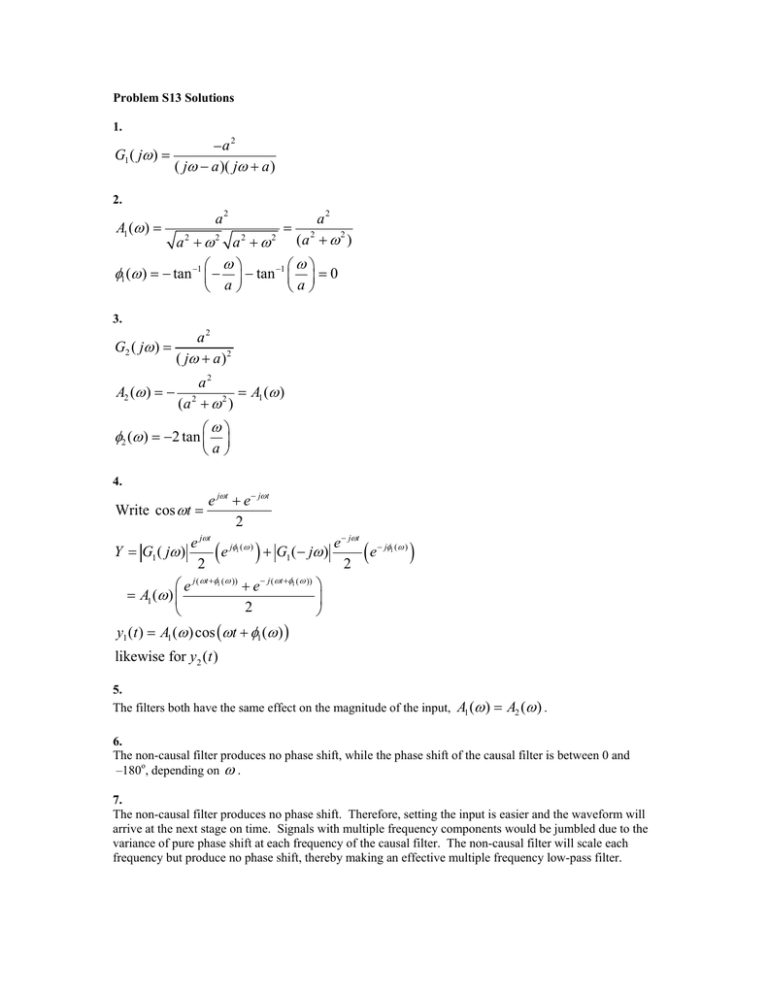
Problem S13 Solutions 1. G1 ( jω ) = −a 2 ( jω − a )( jω + a ) 2. A1 (ω ) = a2 a2 + ω2 a2 + ω2 = a2 (a 2 + ω 2 ) ω −1 ω − tan = 0 a a φ1 (ω ) = − tan −1 − 3. a2 G2 ( jω ) = ( jω + a ) 2 a2 A2 (ω ) = − 2 = A1 (ω ) (a + ω 2 ) ω a φ2 (ω ) = −2 tan 4. Write cos ωt = e jωt + e − jωt 2 e jωt jφ1 (ω ) e − jωt − jφ1 (ω ) ( ω ) e + G − j ( ) 1 (e ) 2 2 e j (ωt +φ1 (ω )) + e − j (ωt +φ1 (ω )) = A1 (ω ) 2 Y = G1 ( jω ) y1 (t ) = A1 (ω ) cos (ωt + φ1 (ω ) ) likewise for y2 (t ) 5. The filters both have the same effect on the magnitude of the input, A1 (ω ) = A2 (ω ) . 6. The non-causal filter produces no phase shift, while the phase shift of the causal filter is between 0 and –180o, depending on ω . 7. The non-causal filter produces no phase shift. Therefore, setting the input is easier and the waveform will arrive at the next stage on time. Signals with multiple frequency components would be jumbled due to the variance of pure phase shift at each frequency of the causal filter. The non-causal filter will scale each frequency but produce no phase shift, thereby making an effective multiple frequency low-pass filter.

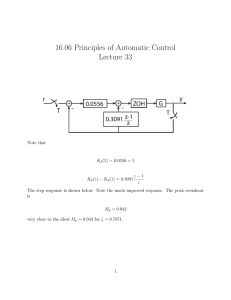


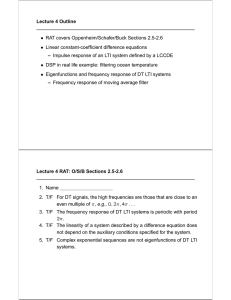
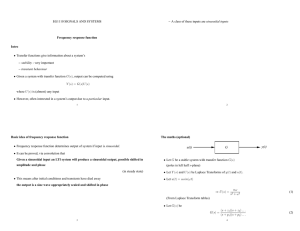

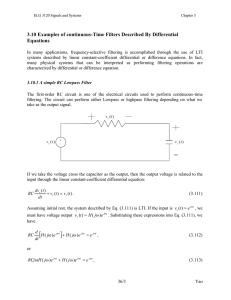
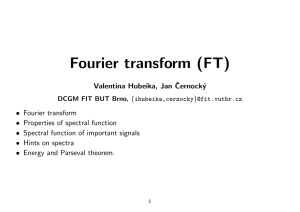
![an d f dt d f dt n−1 +K+ a0f = C cos(ωt + φ) f(t) = Re F(ω)e Re[W]= W](http://s2.studylib.net/store/data/018141773_1-fa0155744d9056a1325a7a0fdcdd3dfa-300x300.png)